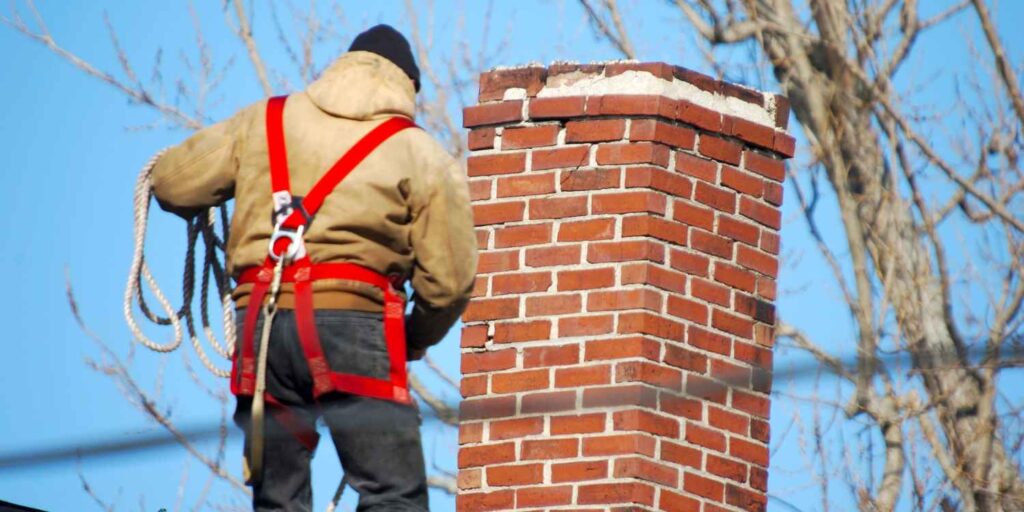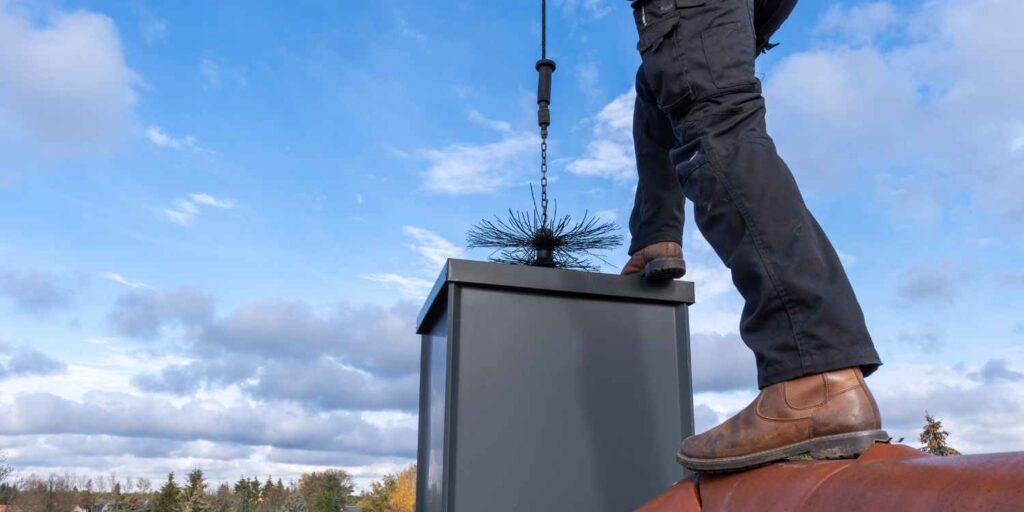Having a fireplace in your home adds a cozy and warm ambiance, especially during colder months, but it’s essential to be vigilant about when your chimney needs repair to maintain this comfort safely. However, the chimney, an integral part of this setup, often goes unnoticed until issues become too evident to ignore. Early detection of when your chimney needs repair can save you from costly damages and ensure the safety of your household. This post will guide you through the telltale signs indicating your chimney needs repair, emphasizing the importance of acting swiftly upon these indications.
Identifying Key Signs Your Chimney Needs Repair:

1. Visible Cracks in the Chimney Structure
One of the most obvious signs that your chimney needs repair is visible cracking either on the chimney’s exterior masonry or inside the flue. These cracks can be more than just an eyesore; they allow moisture to penetrate the chimney, leading to further deterioration and potential structural damage. Small cracks can quickly become bigger problems, especially with the freeze-thaw cycle in colder climates, emphasizing the need for prompt repair.
2. Spalling Bricks
Spalling occurs when water seeps into brick, natural stone, or concrete, causing the surface of the material to peel off, pop out, or flake off. If you notice bits of masonry around the base of your chimney or significant chunks of material coming loose, this is a clear sign that your chimney needs repair. Spalling weakens the structural integrity of the chimney, posing a risk of collapse if left unattended.
3. Deteriorating Mortar Joints
The mortar joints between bricks or stones play a crucial role in maintaining the stability and durability of your chimney. Over time, these joints can deteriorate due to weather exposure and moisture, leading to gaps where water can enter and cause damage. If the mortar joints in your chimney are crumbling or missing, it’s imperative to have them repaired. Tuckpointing, a process where new mortar is applied into the gaps, is often a viable solution to restore the chimney’s structural integrity.
4. Rust on the Firebox or Damper
Rust is a clear indicator that moisture is getting into places it shouldn’t. If you notice rust on your chimney’s firebox or damper, this suggests there’s excess moisture inside your chimney, which can lead to more significant issues like cracks in the flue tiles. A rusted damper can also become difficult to operate, hindering the proper ventilation of smoke and gases from your home.
5. White Staining on the Chimney’s Exterior
Efflorescence, the white staining you may notice on the exterior of your chimney, is more than just a cosmetic issue. It indicates that water is seeping through the chimney materials and evaporating, leaving behind mineral deposits. While cleaning off the efflorescence can improve the chimney’s appearance, addressing the underlying moisture problem is crucial to prevent long-term damage.
6. Damaged Chimney Crown or Cap

The chimney crown (the top element of a masonry chimney needs Repair) and the chimney cap (a cover over the top of the chimney) both serve to protect the chimney from water and debris. Cracks or damages to these components can lead to water infiltration, which can cause a range of issues from the top of the chimney down to the fireplace itself. Regular inspection and repair of the chimney crown or cap are vital for water damage prevention.
7. Chimney Leakage or Water Damage Inside the Home
Signs of water inside your home, such as stains on the ceilings or walls near the chimney, peeling paint or wallpaper, or a musty odor, can all indicate chimney leaks. These symptoms shouldn’t be ignored as they point to potential flaws in the chimney structure that are allowing water to penetrate your home, leading to costly interior damages.
8. A Blocked Chimney
Blockages in your chimney, caused by animal nests, debris, or creosote buildup, can be dangerous, preventing proper smoke and gas ventilation. If you notice smoke coming back into the room instead of going up the chimney, it’s a clear sign that your chimney needs to be inspected and possibly repaired to remove the blockage.
Conclusion
Recognizing these signs early can significantly impact the efficiency of your chimney, the safety of your home, and the cost of repairs down the line. Regular chimney inspections by professionals can help identify issues at their onset. If you’ve noticed any of the signs mentioned above, it’s clear that your chimney needs repair. Taking action early can prevent minor issues from becoming major, costly repairs, ensuring your chimney continues to operate safely and efficiently for years to come. Remember, the safety of your home and loved ones is paramount, and a well-maintained chimney is key to ensuring this safety.





